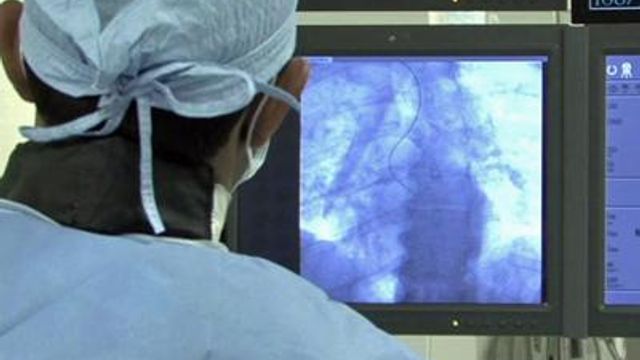Study: Is wrist or leg artery better to reach heart?
The shortest path to the heart turns out to be the best one - not in love necessarily, but in cardiac catheterization, one of the most common procedures in the U.S.
Posted — UpdatedResearchers compared two routes to the heart, through a major artery in the leg or by way of the wrist.
Glen Leif, 61, had two cardiac catheterizations within four years to check for blocked heart arteries. The first was performed through the femoral artery near the groin. The second, just over a year ago, was done by Duke cardiologist Dr. Sunil Rao through the radial artery in the wrist.
“It's much more common outside the U.S.,” Rao said. “The latest estimates for the U.S. put it somewhere between 8 and 10 percent of physicians using this approach.”
Rao helped lead a study of 7,000 patients who had suffered heart attacks in the U.S., comparing the two approaches.
They looked for complications, such as another heart attack, stroke, bleeding or death 30 days after the procedure. Both had similar results, but the radial approach was slightly better.
“Those patients not only had a lower rate of complications, but they actually had better survival from their heart attack,” Rao said.
Fewer of the sickest patients died within 30 days. Most patients, such as Leif, who've had both procedures prefer the radial approach.
“The femoral artery, you have to lay flat for four hours after the procedure. That was a little uncomfortable,” Leif said.
It takes longer for the deeper wound in the femoral artery to stop bleeding.
“Now, the recovery after the wrist procedure was a lot different. I was sitting up. I was talking to my wife,” he said.
After the first procedure, Leif needed four days away from work. As for the wrist, “I could have worked the next day,” he said.
Emergency heart patients are more likely to get the catheterization procedure through the femoral artery in the leg, but patients who can schedule a catheterization can request the radial approach.
Patients can also ask about different physicians' experience in using the wrist artery for the procedure.
• Credits
Copyright 2024 by Capitol Broadcasting Company. All rights reserved. This material may not be published, broadcast, rewritten or redistributed.





